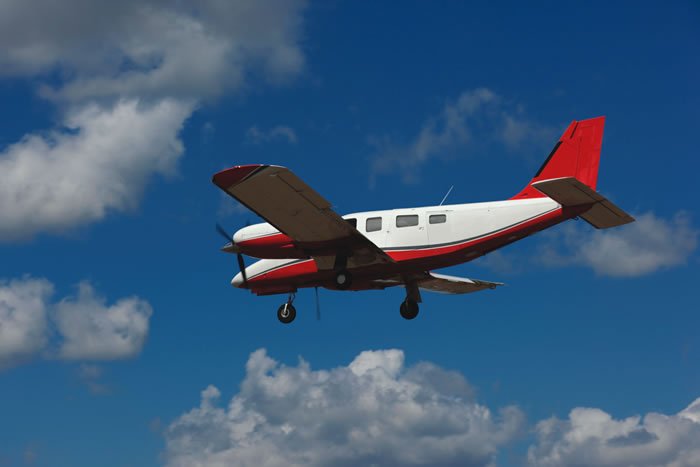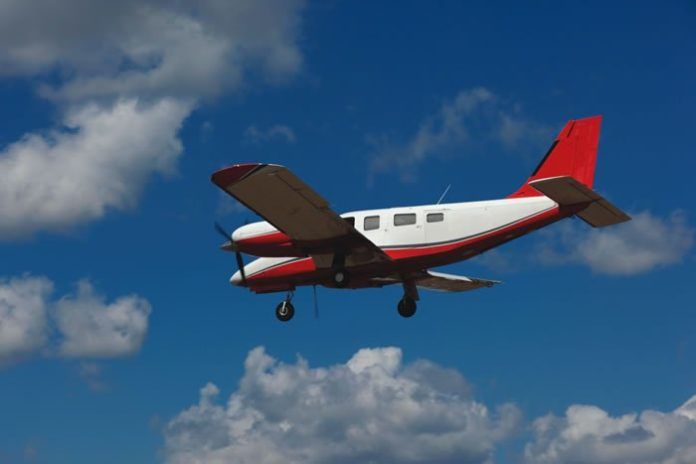Year after year, far and away the largest number of fixed-wing accidents result from attempts to get those airplanes back onto the ground. So says the AOPA Air Safety Institutes 23rd Joseph T. Nall Report, examining general aviation safety during 2011. Landing accidents are more than twice as frequent as any other pilot-related accident category, according to the Report. Thats the bad news. The good news is we can do something about it: improve our performance.

Theres no question landing an airplane is a complex task, but one way to ensure we always perform well is consistency: do it the same way each time and youll eventually get good at it. In other words, we need to make our landings routine, not excitement-filled adventures where the outcome is in doubt until the last moment.
Planning
In fact, its hard to think of a complex task that doesnt require some planning. So it must be with landings, and planning should begin no later than the top of the descent when arriving, or on the ramp when heading out to shoot touch-and-go landings. One of the first things you need to know is which runway youll be using and how youll orient the airplane to execute your new-found approach and landing routine.
Depending on the circumstances, you may be executing a full traffic pattern, entering on a base leg or sliding down a 10-mile final to get to the runway. But these variations really shouldnt matter: You still need to cross the runway threshold at an altitude and airspeed appropriate for a normal landing. To do so, youll need to break down the landing into individual tasks and objectives. How youll enter the pattern, if any, what airspeeds you want at which stages of the approach, what the wind is going to do and how youll compensate-all these questions are the kinds of things for which you should have ready answers. Consistency is key, and if you evaluate these variables the same way on each landing, youve eliminated uncertainty.
One way to ensure youre always eliminating uncertainty is by flying a full traffic pattern, from the downwind entry to a landing. When approaching a non-towered airport from a distance and the question arises of whether or not to execute a full pattern, go ahead and execute a full pattern. Theres a time and place for a straight-in approach, but consistently good landings come after a proper approach, usually following a proper pattern. We learned to do this a certain way-or should have-during our primary training and doing it the same way every time has benefits.
The perennial question of what to do when ATC wants you to abandon flying a traditional traffic pattern gets the same basic answer: Hit certain key points on-airspeed and at the right altitude, and all will be well. See the sidebar on page 18 for some additional details on how to handle the curve balls ATC, traffic and other factors can throw at us. Which brings us to how to fly consistent traffic patterns.
Consistent Patterns
As alluded above, someone once said, A good landing results from a good approach. Thats always been true, and shouldnt come as a surprise to anyone. One of the things meant when we discuss good approaches is that stabilizing the airplane throughout the procedure-especially the final segment-means flying it the same way each time. For most of our landings in the typical personal airplane, we wont be in set-it-and-forget-it mode. Instead, well always be adjusting pitch, power, flaps, gear and trim from when we begin the approach-usually abeam the numbers-all the way to the runway. Doing so adjusts our glidepath to the runway and our descent rate, and slows us down so we cross the threshold when and where we want.
For example, at least five miles out, youll want to have the landing checklist substantially complete: wind and weather information in hand, runway in use, fuel selector and pump correctly positioned, lights on, etc. Youll add things like carb heat, landing gear, flaps, etc., at the appropriate time, then make any adjustments necessary, like to power or trim, and continue the approach.
One way I was trained to land airplanes was to hit certain points in the traffic pattern at consistent speeds and altitudes. Id start abeam the numbers at 1000 feet agl, pull the power and carb heat, lower the landing gear, if any, slow down to, say, 80 KIAS, drop a notch of flaps and turn base. By this time, the airplane is stabilized in a descent and Im looking out the window, gauging when to turn base. Id want to be at 6-700 feet agl before turning final, then slow to 70 KIAS with the final notch of flaps. The sidebar at right has some additional details.
If all of this sounds like configuring the airplane for landing means there are a lot of important tasks to accomplish in a short amount of time, thats becase there are. But once you get into the flow of what to do and when to do it, consistency emerges-things get easier and more laid-back. As one result, it gets harder and harder to screw up by forgetting something if you always do it at the same point in the approach and in the same sequence. As another, it can be easier to remember what you forgot-carb heat? more flaps?-if youre not meeting your targets at various points around the pattern.
Numbers management
No landings discussion can avoid spending some time talking about establishing and maintain the correct airspeed throughout all phases of an approach and touchdown, and this one wont either. In fact, wed wager that excess airspeed is mainly responsible for loss of control accidents while too little airspeed often means coming up short. This really shouldnt be so hard. While its impossible to specify an airspeed each of us should fly on short final, given the wide disparity in airplanes-we dont have to: The manufacturer did it for us.
Our job is to establish that speed-or another one weve determined is appropriate for conditions-and maintain it from short final into the flare/round-out. Well likely be faster than recommended or desired on downwind and base, because we wont have all our flaps deployed, and were using pitch and power to manage the descent to the runway. One of the best ways to control your airspeed and measure your performance against what you should be flying is to use some basic numbers.
For example, you need to know the power settings, flap/gear configurations and descent rates you should be using at specific points in the approach. To determine them, go out to a practice area with an instructor or safety pilot, and see what descent rate 1500 rpm or 17 inches buys you with a notch of flaps. What about full flaps and gear down? Once you know the power settings and configurations to aim for, and when, you can set them and manage the descent rate with flaps/gear. Or, set partial flaps until short final and manage the descent with power-whatever it takes to hit your altitude and airspeed targets in the airplane you normally fly.
Finally, the Big Kahuna: At what airspeed should you aim to cross the fence? Our standard answer to questions like this is, It depends. Most of us are flying certified piston singles, and the certification standards dont allow a landing-configuration stall speed (VSO) greater than 61 KIAS. By FAA decree and convention, 1.3 VSO is considered the speed to aim for on final. For an airplane that stalls at 55 KIAS, that translates to a 72-knot approach speed. Thats about right at the airplanes gross weight, but youll want to shave a digit or three if youre light, to minimize floating down the runway. A little slower, say to 1.2 VSO, likely wont hurt anything, but anything less probably is a bad idea unless theres a good reason. At least until youve gotten to the point where youre making consistently good landings, dont get any slower.
Seeing is believing
Trying to describe all the visual cues we need to use when landing an airplane can get complicated, but depth perception is critically important, right along with ensuring we focus down the runway, not right in front of the airplane. Peripheral vision also helps us gauge our height above the ground in the flare/round-out, but we need some basic depth perception skills and ideas of what visual cues well use to initiate the flare. That comes with practice.
Visual cues are critically important throughout the pattern and approach, also. You need to gauge your turns from downwind and base, and once youre on final, you need to monitor your touchdown aiming point: Is it sliding up the windshield, sliding down or just sitting there? If its just sitting there, getting larger, youre doing it right. If its moving up, youre trending low, so add some power-200 rpm/two inches is a good place to start-and let the nose come up a bit to slow your descent. If the aiming point is moving down the windshield, youre trending high, so pull off a bit of power (try 200/two again). Trending high also can be cured by not touching the pitch or power, but dropping another notch of flaps or the gear. It depends.
Finally, while were out practicing our depth perception and using our peripheral vision to help monitor and manage it all, we still need to keep the nose pointed toward the far end. That seems to be tripping up a lot of people. Unless its a turf runway, theres likely a centerline stripe, right down the middle to the far end. You can use it for all kinds of things: directional control, helping keep the wings level in a crosswind and for depth perception. Preventing the basic loss-of-control accident usually is as simple as remembering its an airplane, not a car, and flying it all the way to the ramp.
Making It Routine
Whenever I grade myself on a flight, on a landing or some other maneuver, I always try to compare what I did to what I envisioned doing. I also ask myself whether the successful outcome of the flight or maneuver is ever in doubt, as the FAAs practical test standards put it. The same is true for traffic patterns, approaches and landings: Does what youre doing and the metrics youre using to manage it all make a successful outcome more or less in doubt?
Wed also argue that until you get comfortable with the various tasks you need to perform to land an airplane, youre going to continue having trouble. Youll possibly be fighting the airplane, struggling to find the right combination of pitch, power and other variables. It wont be any fun, and youll be stressed. Even if youre just trying to buff out some rough spots in your skills, youll still need to come up with a set of procedures to implement, know when to implement them and gauge how well youre doing it throughout the approach, into the flare and on the roll-out. By doing so, youll soon reach the phase when you really dont have to think too much about it. Thats what laid-back landings are all about.
Jeb Burnside is this magazines editor-in-chief. Hes a 3100-hour instrument-rated ASEL/ASES/AMEL commercial pilot and aircraft owner.




